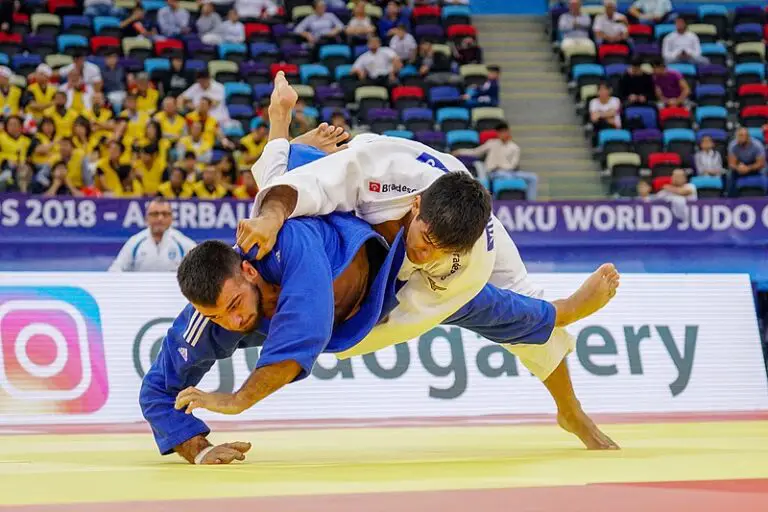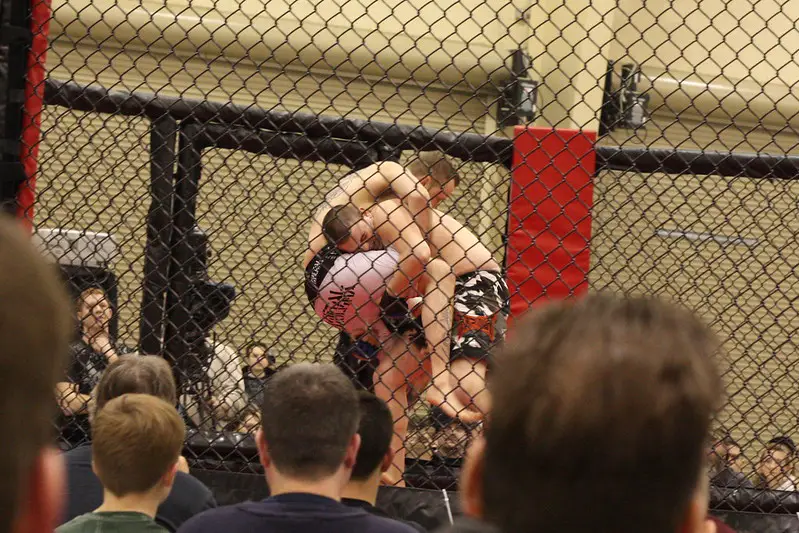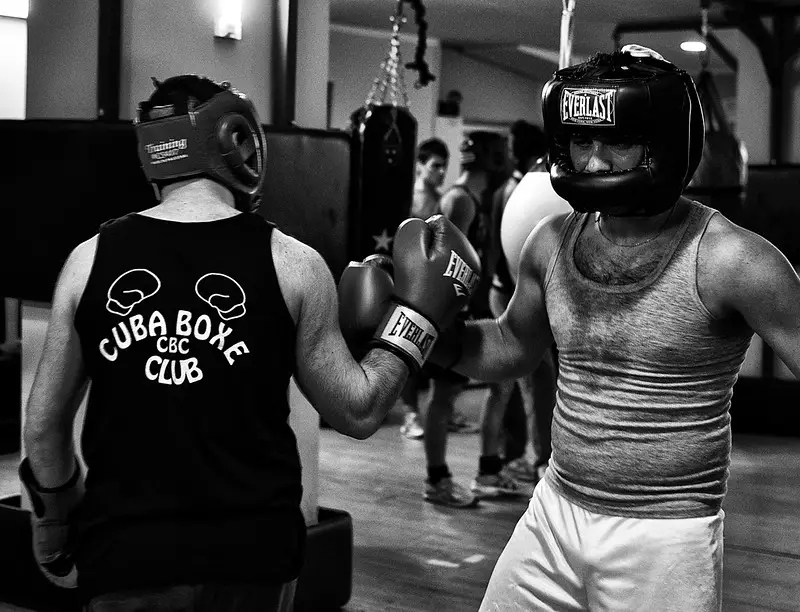Judo is widely regarded as one of the best grappling martial arts. Still, many people doubt its effectiveness in real combat scenarios which leads to the question – is Judo bad for Self-Defense?
Judo as a system is one-dimensional as it focuses entirely on grappling and this approach limits your abilities in a self-defense situation where individuals often need to deal with striking. Next, Judo is a sport where the main goal is to learn how to win matches under the rules and it doesn’t include self-defense training.
However, this doesn’t mean that Judo does not work in real life. It is a brief explanation of its limitations so be sure to read this article to learn more about it.
Why Judo Is Bad for Self-Defense?
The key limitations are related to the lack of advanced striking techniques and proper self-defense training. There are also certain limitations when it comes to competition rules which further limit its effectiveness.
Here is a detailed explanation of all the downsides.
Lack of striking
Striking is the most important skill when it comes to self-defense. Most fights begin with an individual throwing a punch as this is the most natural and fastest way to hit the target. People who want to hurt someone rarely go for a takedown or throw a kick.
Thus, knowing how to punch, block, move away and counterattack are key components of self-defense training. It is also what makes Judo quite limited as this system does not teach any type of striking. No punches, kicks, or elbows and knees. Nothing.
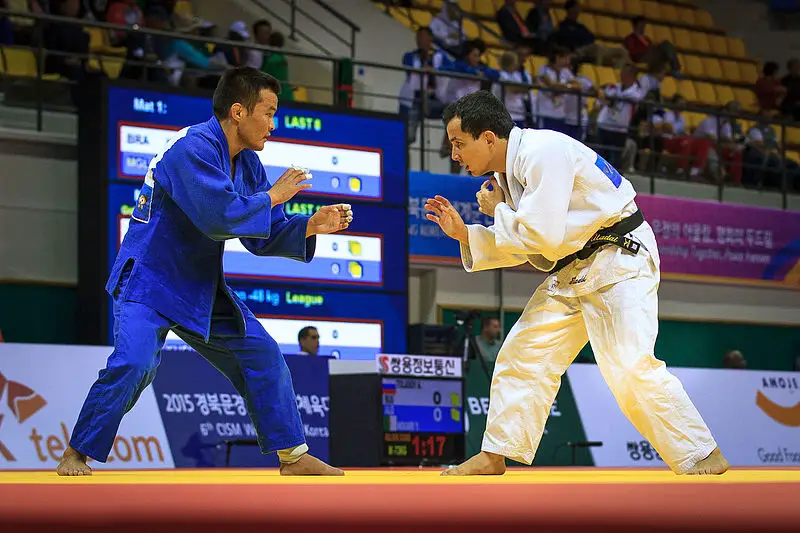
As a result, Judokas may have a hard time closing the distance without taking damage. They must step into the range to secure a grip, but they are open to taking damage in the process. Even if they secure a strong grip, they still need to deal with close-range striking.
No advanced self-defense tactics
Real-world combat is not a pro-match between two skilled martial artists. No, it is a chaotic situation fraught with danger where so many things can go wrong.
Thus, proper self-defense training is needed if you want to prepare for most scenarios you may face on the streets. This includes non-combat tactics such as verbal skills to talk your way out, or situational awareness, and combat tactics such as striking using all limbs, grappling, etc.
However, judokas do not learn how to de-escalate the situation and talk their way out of trouble. They don’t practice communication skills at all.
Next, they don’t learn how to deal with weapons or deal with multiple attackers. Furthermore, there is an absence of dirty moves such as eye-gouging, striking the throat, pulling hair or targeting the groin area.
Though brutal, these moves are effective in real combat.
Judo’s emphasis on sportive techniques
Judo is a combat sport. Kano Jigoro created the system as a safer and more sportive variation of Japanese jujutsu. Thus, the system never emphasized self-defense or real-world fighting.
The entire learning curriculum is designed to fit the official rules of competition. According to these rules, judokas compete for 2 minutes where one perfect throw can win you a match. Also, the action resets after every successful point so there is no continuous action.
As a result, judokas dedicate each minute of their training to learning how to compete under these rules. All the skills, instincts, and reactions they develop are aimed to increase their chances of winning a match.
But on the other side, this approach limits their capabilities in a real fight. Some of the habits and reactions they develop might even be bad for self-defense combat.
Can Judo Help You In a Street Fight?
Judo skills are practical in specific situations that involve close-range combat. This includes if an individual gets attacked in a bar, hall, room, or any type of closed space where most physical confrontations happen.
Judokas are more than capable of using their moves in self-defense, and here is a detailed explanation of their advantages.
Proper reactions and instincts
Judo emphasizes sparring and live drills as the best method of teaching a person how to apply skills in a real exchange. They have superior reactions, muscle memory, body mechanics, and fighting instincts than most people. The skills and techniques they master are stamped deep into their muscle memory, which is crucial.
Once in a real fight, Judokas would execute a throw in a split second without thinking about it. Their minds would spot a certain pattern, and react on autopilot to neutralize the threat.
Judo throws are highly effective
Although strength is important, grappling is more about technique, leverage, balance, and weight distribution. It’s not striking where you can put your hands in guard to block them and swing back. No, it takes years of practice for any individual to learn how to defend or attack using judo moves.
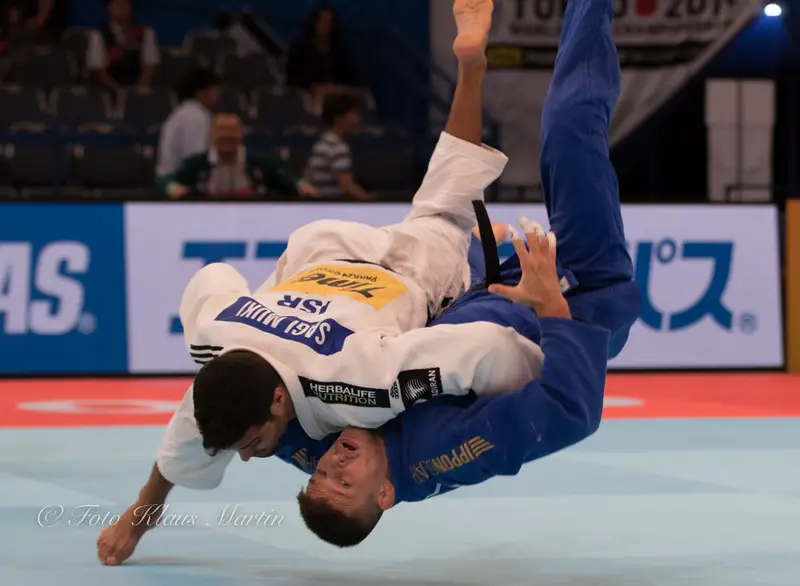
This makes judokas superior in a fight where people not trained in grappling do not know how to defend against these attacks. They can get attacked by Mike Tyson in their prime, but the judoka would take Tyson down without much resistance in terms of grappling defense.
Safe approach to neutralizing threat
One of the most overlooked aspects of self-defense training is the safety of techniques. Although you have the right to use anything in your power to protect your life, it’s also important to neutralize the attacker in a “human” way. This means by not causing serious injuries that might impact their life in the long run or be lethal.
Judo fits well here as its throws and holds enable you to subdue the attacker without causing any injuries. Of course, they can always get hurt if you slam them on the concrete. But the point is that you can decide whether that’s going to happen or not.
Since most people don’t know how to grapple, just taking them down and establishing strong top control is often more than enough to win a fight.
Best Judo Throws For Self-Defense
However, judo offers a range of throws and techniques that can be particularly useful for self-defense due to their ability to neutralize threats by unbalancing, controlling, or immobilizing an attacker. Here are some judo throws and techniques well-suited for self-defense:
- Osoto Gari (Large Outer Reaping) – involves sweeping the opponent’s leg from the outside while pushing against their upper body. It’s effective in self-defense because it can bring an attacker to the ground hard and fast, giving you a chance to escape.
- Ippon Seoi Nage (One-Arm Shoulder Throw) – involves turning your back partially to the attacker, loading them onto your back, and flipping them over your shoulder. It’s powerful and can incapacitate an attacker, but it requires precision and timing.
- O Goshi (Large Hip Throw) – You use your hip as a pivot point to lift and throw the attacker over you. This throw is practical for self-defense because it allows you to use your body weight against the attacker, making it effective even against larger opponents.
- Tai Otoshi (Body Drop) – this involves using one leg as a block and your hands to direct the attacker’s body over that leg. It’s particularly useful when you need to control the direction of the fall, potentially minimizing injury in a self-defense context where your goal is escape rather than harm.
- Koshi Guruma (Hip Wheel): Similar to O Goshi but involves encircling the attacker’s head with one arm and using your hip as a fulcrum to execute the throw. This can be an effective way to control an attacker’s upper body for a decisive manoeuvre
When applying judo for self-defense, a few key principles should guide you:
- Awareness and Avoidance: The best self-defense is avoiding dangerous situations whenever possible.
- Balance and Efficiency: Use the attacker’s strength and momentum against them.
- Control and Safety: Aim to control the situation with minimal harm to yourself and, if possible, the attacker.
Is Judo Effective In MMA?
Yes, judo is more than used in modern MMA, and it has proven to be an effective component of many fighters’ skill sets.
Judo’s emphasis on throws, takedowns, and ground control aligns well with the diverse combat needs and rules in MMA. Here is a list of key reasons why Judo is effective for MMA:
Throws and Takedowns
Judo specializes in a variety of throws and takedowns, which can be used to take opponents to the ground. The dynamic and explosive nature of these moves makes them effective in MMA. A single takedown can shift the momentum of a fight and gain you a big advantage.
Grip Fighting:
Judo practitioners excel at grip fighting (known as “kumi-kata”). This helps them control an opponent’s posture and movements, and further disrupt their balance. This skill translates well into clinch work in MMA, where controlling an opponent can set up strikes, takedowns, or further grappling exchanges.
Ground Control
While judo is often associated with standing techniques, it also includes groundwork (ne-waza). On the ground, the focus switches to pins, control, and submissions. This aspect of judo can complement BJJ techniques, another grappling art widely used in MMA.
Balance and Positioning
Judo teaches practitioners how to maintain balance and leverage their weight, skills that are invaluable in both stand-up and ground fighting situations in MMA.
Can Judoka Beat A Striker (Boxer or Kickboxer)?
Judokas have all the skills to beat a trained striker in a street fight, but only in scenarios that go in their favour. This includes if the fight is in a close space such as the bar, cafe, hall, or a crowded space where boxers and kickboxers do not have enough space to move around.
In this scenario, judokas can quickly close the distance because strikers need space to operate. They can use this to their advanced to get the hold of them, secure a firm grip, and from that position break their balance to take them down. Since strikers don’t know how to defend against throws, they would hit the ground without much resistance.
On the ground, it would all be over in a matter of seconds. Judokas would quickly establish strong control which they can use to pin the striker or set up one of many joint locks or chokes. This scenario often happens in MMA matches where judokas use their skills to overwhelm skilled strikers.
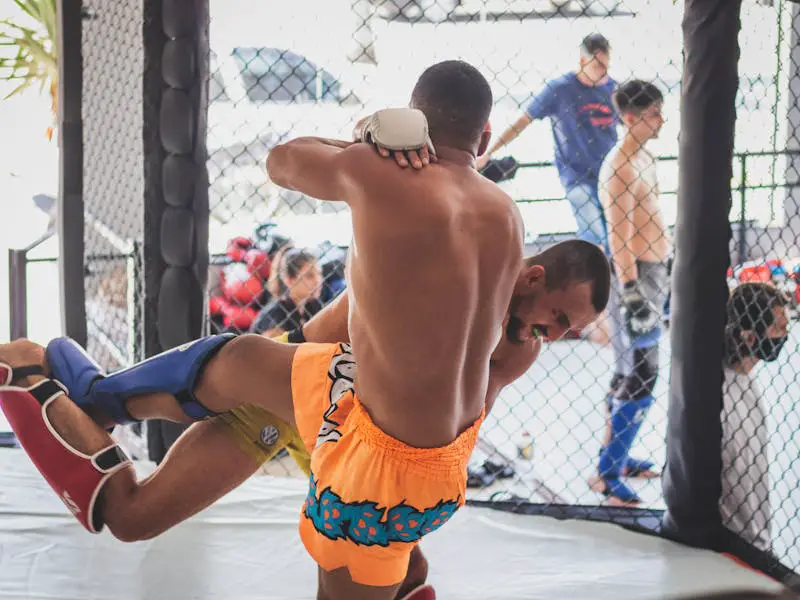
Also, it’s easier for a judoka to defend against the grappling attack than for a striker against grappling. Raising your hands to block or swinging a strike is an instinct. Grappling is different as it requires years of practice and you can’t use sheer strength to defend.
Bear in mind that we are talking about specific scenarios. There are also many other situations where strikers have the upper hand. In the end, they are always one punch away from shutting your lights out.
How Effective Is Judo In MMA? Complete Analysis
Final Thoughts — Is Judo Bad For Self-Defense?
Despite not being a self-defense martial art, Judo techniques are practical in real combat. Its standup grappling moves such as throws combined with physical strength enables judokas to quickly overpower the attacker.
The system is notably effective in closed-space where a judoka can quickly get the hold of the attacker. This includes fight scenarios that happen in common places such as a bar, room, or crowded space.
Of course, you should be aware of the limitations too. The biggest one is the absence of striking which is a key factor in any type of real-life combat. Next is the lack of proper self-defense tactics, a scenario in which you need to deal with weapons, multiple attackers, etc.
